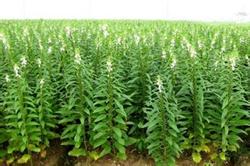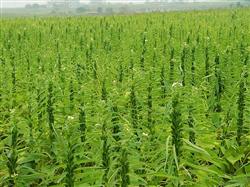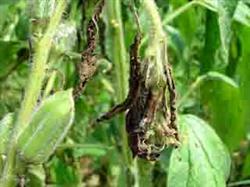Why are sesame seeds afraid of repeating?

"Sesame is afraid of repeated cropping, it is blind for ten or nine years" and "stubble is like being fertilized." it can be seen that sesame is the most avoid continuous cropping and generally implements a three-year rotation system, and it is suitable for sorghum, corn, wheat and millet in the first stubble. There are two main reasons for the failure of continuous cropping of sesame seeds: one of the reasons is that continuous cropping of sesame seeds will aggravate the disease. In the process of sesame production, many pathogenic bacteria, such as stem wilt, bacterial wilt, blight and so on, remain in the soil after sesame harvest. If sesame seeds are planted in the second year, these pathogens will become the source of infection of sesame seeds. The longer the continuous cropping, the more pathogens in the soil, and the disease of sesame will become more and more serious. Infected by the disease, sesame plants will appear stunted, single plant dwarf, falling flowers and few capsules and other symptoms, and even a large area of wilting and death will occur. The second reason is that sesame is a crop that needs more fertilizer, continuous cropping will lead to nutrient imbalance, break the balance of soil fertility, resulting in the lack of nitrogen and potassium, and it is difficult to increase the yield of sesame. Therefore, continuous cropping of sesame seeds is unscientific and should be avoided.
- Prev

Key points of cultivation and management of sesame
Most farmers believe that sesame is a low-yield, drought-tolerant crop with extensive management. As a result, the yield per mu of spring sesame is less than 150 kg over the years, and that of summer sesame or intercropped sesame is less than 100 kg. The experiment shows that as long as the improved varieties are added and the cultivation measures are improved, the yield of sesame can be increased by more than 20%. First, Shi.
- Next

Control methods of sesame bacterial wilt
First, the symptoms showed that sesame bacterial wilt occurred early, the root turned brown at the initial stage, the top of the plant drooped, and then dark green patches appeared on the stem, and gradually deepened and blackened. The leaves gradually drooped from top to bottom, the diseased plants were shorter than the healthy ones, the vascular bundles of the rhizomes turned brown, and finally the pith turned into holes. There are bacteria both inside and outside the stem.
Related
- The first cup of black tea in spring, the flavor and history of tea gardens in Kenya, Africa
- The computer can not only choose potatoes, but also grow tea rice. AI will grow winter oolong tea champion.
- It is not only the inflated tea bitten by insects, but also engraved with the four seasons tea in Beipu.
- The Oriental Beauty Tea Festival in Zhuxian County takes the stage at the weekend to experience the plus-size feast of oil tea.
- & quot; Oriental Beauty Tea & Exploration of Emei in Hsinchu, the hometown of quot;
- The new variety of strawberry "Tainong 1" dessert is the first choice with mellow aroma. Crimson gorgeous
- History of Tea in Taiwan: from Wild Inner Mountain to Export Tea Garden
- Two types of Taiwan Oriental Beauty Black Tea won the British three-Star Award for Childhood Tea Xiang Zhang Jiaqi changed from pilot to champion tea maker.
- Banana species and varieties: the planting history of Taiwan Xianren banana and dwarf banana is long, is banana disease resistant?
- Coffee planting Technology: Qianjie Coffee from Seedling to harvesting

